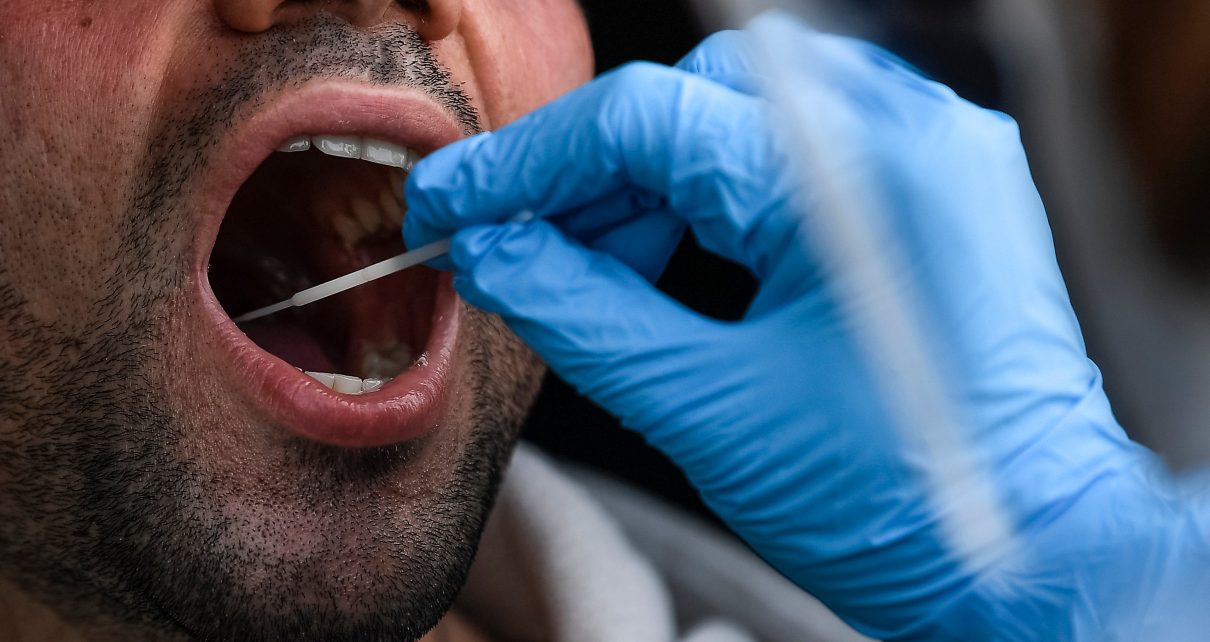The items below are highlights from the free newsletter, “Smart, useful, science stuff about COVID-19.” To receive newsletter issues daily in your inbox, sign up here. Please consider a monthly contribution to support this newsletter.
The New York Times is routinely updating a graphic resource for readers, “Is your state doing enough coronavirus testing?” The U.S. only conducts 52 percent of the daily coronavirus tests that Harvard Global Health Institute researchers estimate are necessary to keep the spread of SARS-CoV-2 in check, Keith Collins writes. But perhaps more useful for lay people are state-by-state estimates, which show the extent of testing in all 52 U.S. states, based on data collected by the Covid Tracking Project. A total of 10 U.S. states are meeting a testing target set by the Harvard researchers, the story states. Where are these states? Hint: stick close to the New England states, our nation’s capital, “Seward’s Folly,” and “the Land of Enchantment” (last updated 8/20/20).
A “spit test” for SARS-CoV-2 infections that was developed by Yale University researchers received emergency-use approval on 8/15/20 from the U.S. Food and Drug Administration, several outlets reported. The test is “easier to administer and analyze than the standard nasal swabs,” reports Tanya Lewis at Scientific American. The Yale test, called SalivaDirect, “is not the first saliva test the FDA has authorized,” Lewis writes, but it can work with chemicals made by a variety of companies, which should prevent supply-chain issues that have slowed other coronavirus testing methods. The bulk of Lewis’s piece features a Q&A with one of the Yale researchers who helped develop the spit test. It sounds like it could be a while before this spit test is widely available (8/20/20).
A piece by Claudia Wallis for Scientific American dives into the science — both biological and social — behind why older people, men, individuals with certain genetic variants, people with underlying chronic conditions such as cardiovascular disease and diabetes, Latinx people, and Black people are at higher risk for severe cases of COVID-19 or for dying from the disease (8/20/20). Early in the story, Wallis introduces the analogy of a Russian nesting doll for thinking about how multiple risk factors can “stack up” for any one of us.
Apoorva Mandavilli at The New York Times reports that more than a dozen scientists think that the pandemic’s herd immunity, “the point at which the virus can no longer spread widely because there are not enough vulnerable humans,” is 50 percent or less. Previously, scientists have put the figure at 60 to 70 percent. Immunity can be acquired by overcoming an infection with SARS-CoV-2 or by vaccination if vaccines become available. Some scientists estimate that parts of New York, London, and Mumbai might already have sufficient immunity among their populaces to resist a second wave of SARS-CoV-2 infections, the story states. Unlike previous estimates, some new estimates for herd immunity take into account the extent to which the reproductive number, R-naught, varies in different groups and subpopulations. R-naught in these new estimates is assumed to vary by population density in a region, the extent of mixing among community members, and the age profile of a community. “The new models offer food for thought…but should not be used to set policy,” according to some experts interviewed for the story, Mandavilli writes (8/17/20).
Freelance journalist Tara Haelle has written a compassionate first-person piece for Medium’s Elemental about the limits of our mental and physical “surge capacity” for responding to drawn-out events like the current pandemic. Haelle talks about how she got through feeling despondent and adrift in recent months. Some of it has to do with “reckoning with what’s called ambiguous loss,” Haelle writes, which refers to “any loss that’s unclear and lacks a resolution.” With the pandemic, what we’ve lost is a “way of life, of the ability to meet up with your friends and extended family,” says a family therapist and emeritus professor of social sciences at the University of Minnesota who is quoted in the story. My favorite tip from the solutions section near the end of the essay is to “expect less from yourself” (8/18/20).
Electric rice-cookers and multi-cookers may effectively inactivate 99.9 percent of four common viruses in an artificial saliva solution applied to medical-grade N95 masks without degrading the masks’ fit or filtration efficiency, according to a recently published study covered by Allyson Chiu at The Washington Post (8/14/20). The relatively simple method could be used to inactivate SARS-CoV-2 on used medical-grade masks, the story suggests. A 50-minute treatment “without pressure at a temperature of 212 degrees Fahrenheit” of an N95 mask made by 3M “thoroughly cleaned” for re-use, Chiu writes. Engineers at the University of Illinois at Urbana-Champaign published their results 7/15/20 in the journal Environmental Science & Technology Letters. Inside the cooker, N95’s should be wrapped in a towel to protect them from the cooker’s inner walls or heating elements, the story states (8/14/20).
We are bigger threats to our pets than our pets are to us when it comes to passing SARS-CoV-2 across species, reports David Grimm for Science. There’s no strong evidence for this conclusion, but “everything scientists have seen so far suggests cats and dogs are highly unlikely to pass SARS-CoV-2 to humans,” Grimm writes. Nearly all pets who have tested positive for the virus had contact with infected humans, the story states. Fortunately, pets infected with the virus tend to only have mild COVID-19 symptoms or none at all, the story states. Failure to wear a mask, wash hands frequently and social distance puts both pets and their humans at risk for infection with SARS-CoV-2, the story states (8/14/20).
A Chemical & Engineering News story by Massachusetts-based freelance writer XiaoZhi Lim raises safety concerns about disinfectants that contain “quats” — quaternary ammonium compounds. Quat disinfectants, which are found in many disinfecting sprays, wipes, soaps, and hand sanitizers, have been widely used for decades and now are widely used by consumers, hospital workers, janitors, and public transit workers to reduce the risk of catching SARS-CoV-2. But quat compounds also have been linked to developmental and fertility problems in mice, Lim writes, and to negative changes in cellular processes. No data links quats with “systemic toxicity” in humans, Lim reports. The California Department of Public Health is quoted in the story as saying, “We proactively recommend the use of disinfectants that do not contain [quats] or other harmful chemicals, whenever possible.” The U.S. Environmental Protection Agency is set to release updated risk assessments for quotes in 2021, and at least one study has measured quat levels in samples of human blood and analyzed them for markers of cellular dysfunction and inflammation. Reviewers currently are assessing the results for publication in a journal, the story states (8/2/20).
You might enjoy “Virtual freshman orientation,” by Nicky Guerreiro and Ethan Simon, for The New Yorker (8/17/20).



